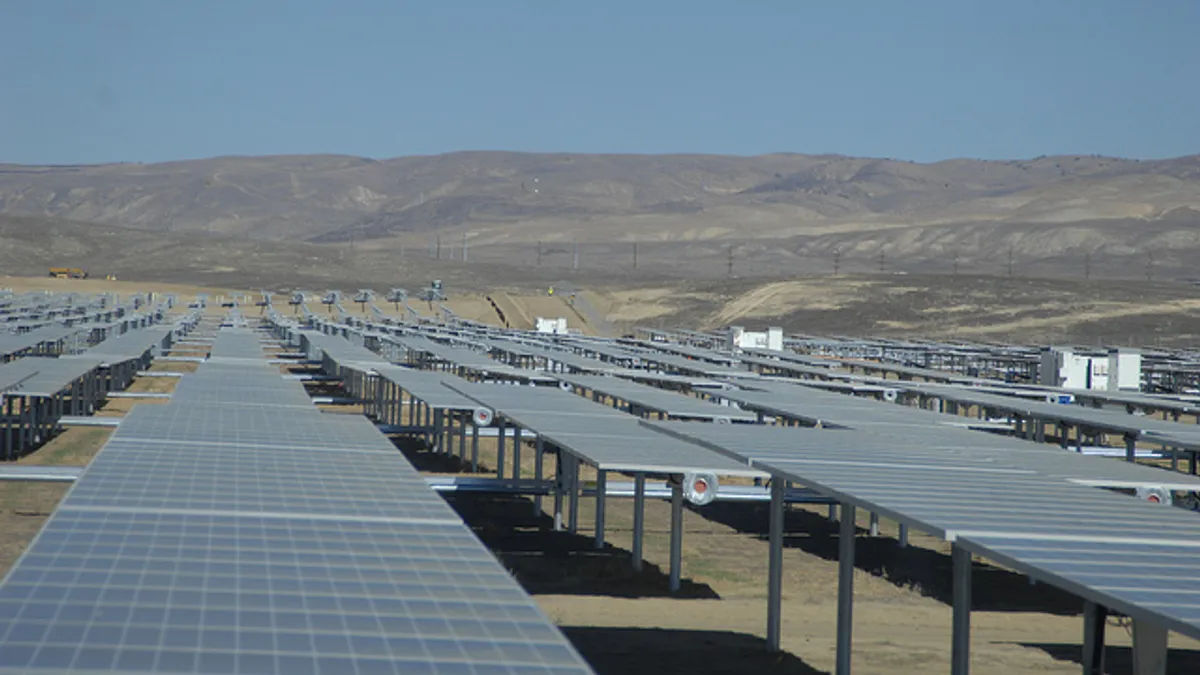Dive Brief:
- Power output from commercial-scale solar projects grew by 102% last year, according to the U.S. Energy Information Administration's (EIA) Electric Power Monthly update for February 2015.
- The EIA's numbers do not include output from "behind-the-meter" solar projects, meaning the actual amount of solar power generated was even higher.
- In its last Short Term Energy Outlook, EIA said it expects continued growth in utility-scale solar generation, projecting it to average almost 80 GWh per day in 2016.
Dive Insight:
While solar's overall share of U.S. electricity production remains fairly small, EIA data shows it continues to grow as a resource.
Coal power grew by a fraction of 1%, while nuclear added about 1% and gas generation actually fell slightly. Non-hydro renewables have increased 11% since 2013, according to EIA data.
Despite the growth, the EIA said it expects solar power will average only 0.7% of total U.S. electricity generation in 2016. Although solar growth has historically been concentrated in customer-sited distributed generation installations, EIA said it expects that utility-scale solar capacity will increase by more than 60% between the end of 2014 and the end of 2016, with about half of this new capacity being built in California.
Wind capacity, which the agency said grew by 7.7% in 2014, is forecast to increase by 16.1% in 2015 and by another 6.5% in 2016.
"Because wind is starting from a much larger base than solar, even though the growth rate is lower, the absolute amount of the increase in capacity is more than twice that of solar: 15 GW of wind versus 6 GW of utility-scale solar between 2014 and 2016," EIA noted.















